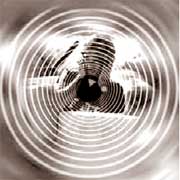Sound Weapons: An Emerging Threat with Non-Lethal Claims
Traditionally, sound weapons have been viewed as non-lethal; however, this perception may soon change if ambitious Western projects succeed…
As early as before World War II, several countries initiated research into systems that could identify the source of sounds, specifically to locate enemy artillery units based on the sound of firing shells. Nevertheless, such systems remained passive, primarily intended for defensive purposes.
The Nature of Sound Weapons
In the 1960s and 1970s, many nations began exploring the use of sound sources to develop offensive weapons capable of injuring individuals to varying degrees or limiting their operational capabilities. At that time, research in this field was primarily kept secret and not widely publicized. Recent documents indicate that significant achievements in this type of weaponry remain elusive.
Following the end of the Cold War, several countries, including the United States, the United Kingdom, and Japan, embarked on research into non-lethal weapons designed to incapacitate a significant number of people while avoiding loss of life or injury. Sound weapons consequently emerged as a critical area of focus.
Notably, impressive research and analyses were published in the journal Science and Global Security, Volume 9/2002 by Dr. Urgen Altmann from Bochum University. The author detailed various issues concerning sound weapons, including parameters related to sound sources, the effects of high-amplitude sound on the human body, the propagation of intense sound in the air, and potential countermeasures against the effects of sound weapons.
Western Projects
In recent years, the United States has been conducting a series of non-lethal weapon research projects at the Armament Research, Development, and Engineering Center (ARDEC) in New Jersey. A notable project involves the development of a device that fires non-diffracting sound “ammunition” using large-diameter antennas from the Scientific and Applied Research Association (SARA) in Huntington Beach, California. The inventors of this weapon aim to expand its applications not only on the battlefield but also for riot control and crowd dispersal. The cooperation between SARA and ARDEC also seeks to develop a high-power, low-frequency sound weapon to protect U.S. agencies abroad. These weapons can create “sound barriers” around specific perimeters to prevent unauthorized access, effectively safeguarding U.S. entities (such as embassies) overseas.
Meanwhile, the British have developed infrasonic broadcasting devices (below 20 Hz) that impact human auditory organs, causing visceral reactions and disrupting heart function, potentially leading to death. This type of weapon was previously employed in counterinsurgency operations in Northern Ireland. To counter enemy forces on the battlefield, low-frequency sound emitters designed to induce disorientation and even cause internal organ spasms have been tested.
To eliminate enemies hiding in bunkers and armored vehicles, the U.S. has researched very low-frequency “sound ammunition,” produced by combining ultrasonic vibrations emitted from large antennas. American experts have introduced a low-frequency sound pulse generator operating at 10 Hz, approximately the size of a baseball, with enough power to injure or kill individuals from several hundred meters away.
U.S. researchers are also exploring the use of extremely loud sound sources through a system of loudspeakers connected to amplifiers powered by robust batteries. The National Center for Acoustics Physics at Mississippi State University has developed a loudspeaker measuring 17 meters in length and 2.3 meters in diameter, capable of producing sound with a power of up to 20 KW. Additionally, the U.S. is developing a non-lethal sound weapon to be mounted on helicopters, with adjustable frequencies ranging from 100 Hz to 10 KHz and an operational radius of 2 km (with plans to extend the range to 10 km). This system will include a horn powered by an internal combustion engine capable of several kilowatts, designed to prevent unauthorized access to weapons of mass destruction storage facilities.
To achieve high-power ultrasonic waves, large piezoelectric discs can be used. One such device has been constructed to amplify sound levels up to 160 decibels (while the pain threshold for human ears is 137 decibels). It is also possible to affect living bodies using a series of small explosions at frequencies similar to infrasound.
The Consequences of Sound Weapons
 |
Sound weapons: Unforeseen consequences (Photo: CAND) |
A 1996 report from SARA highlighted several research findings in this area. It stated that infrasound levels of 110-130 decibels negatively impact the digestive system, causing pain and nausea. Sound values reaching 90 to 120 decibels at low frequencies (5 to 200 Hz) can induce anxiety and severe disturbances, while physical injuries and tissue damage appear at thresholds of 140-150 decibels, with 170 decibels capable of causing immediate injury. At low frequencies, vibrations from internal organs may lead to hemorrhaging and spasms. High and ultrasonic frequencies (5 to 30 KHz) can burn tissue and dehydrate cells.
The adverse effects of sound weapons on the human body are evidently difficult to predict. This uncertainty leads humanity to question the “humanitarian effects” of such non-lethal weapons, as often claimed by many Western nations. If the consequences cannot be fully predicted, sound weapons should be placed on the list of prohibited weapons for research, development, and use.
Hong Son




















































